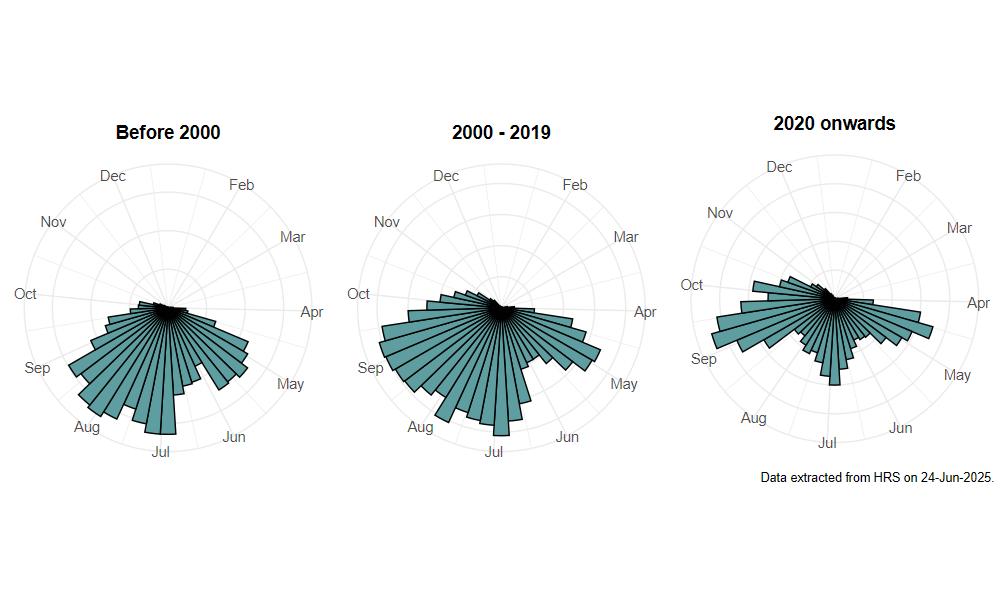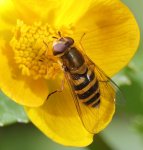Syrphus ribesii (Linnaeus, 1758)
Identification
Identification difficulty = 3. ![]()
![]() according to Ball & Morris, 20241
according to Ball & Morris, 20241
Biology
The larva is commonly found feeding at all sorts of ground layer and arboreal aphid colonies. Overwintering larvae can often be found in leaf litter below aphid-infested Sycamore Acer pseudoplatanus trees. Occurs in most habitats, including woodland, farmland and urban parks and gardens. Adults rest on sunny vegetation and visit flowers of all sorts. The males hover amongst the canopy of woodlands and are responsible for the audible whine that can be heard in mid-summer. This species is multiple-brooded, and so has a long season.
Flight period
The following plots show the number of unique records per week excluding those reported to be of immature stages.

Distribution
One of the most widespread and abundant hoverflies throughout Britain.

Trends
The following plots show the Frescalo TFactor vs year and a map of the rescaled frequency (all records) for the species.
-
Ball, S., & Morris, R. (2024). Hoverflies of Britain and Ireland. WILDGuides (3rd ed.). Oxford: Princeton University Press. ↩
